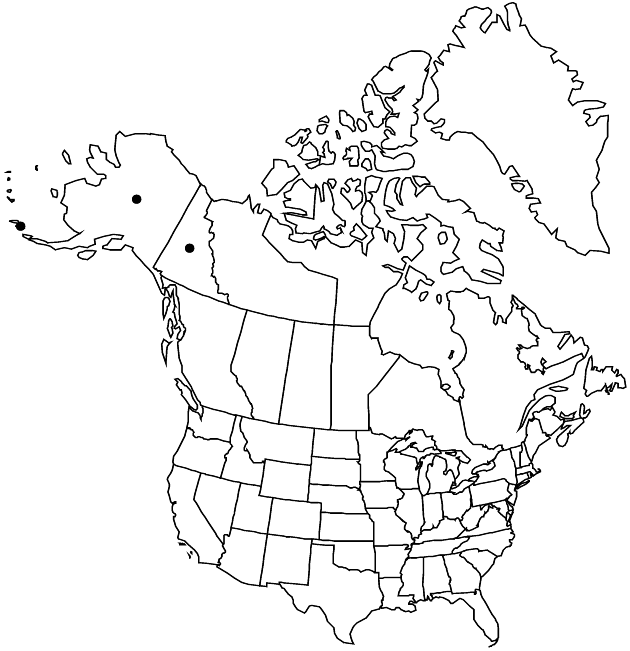Difference between revisions of "Taraxacum alaskanum"
Bull. Torrey Bot. Club 28: 512. 1901.
FNA>Volume Importer |
imported>Volume Importer |
||
| (2 intermediate revisions by 2 users not shown) | |||
| Line 55: | Line 55: | ||
|publication year=1901 | |publication year=1901 | ||
|special status= | |special status= | ||
| − | |source xml=https:// | + | |source xml=https://bitbucket.org/aafc-mbb/fna-data-curation/src/2e0870ddd59836b60bcf96646a41e87ea5a5943a/coarse_grained_fna_xml/V19-20-21/V19_331.xml |
|tribe=Asteraceae tribe Cichorieae | |tribe=Asteraceae tribe Cichorieae | ||
|genus=Taraxacum | |genus=Taraxacum | ||
Latest revision as of 19:51, 5 November 2020
Plants (1.5–)3–9(–16, mostly in fruit) cm; taproots sometimes branched. Stems 1–3+, ascending, proximally purplish, glabrous or glabrate. Leaves fewer than 10, horizontal to patent (green); petioles slender or decurrent lines from bases; blades oblanceolate or narrowly oblong (usually runcinate), (1.5–)2.2–11.6 × 0.4–2.2 cm, bases attenuate, margins usually lobed regularly, ± deeply, in 3–5(–6) pairs, occasionally (younger) only toothed or denticulate, lobes usually retrorse, occasionally straight or antrorse, triangular to narrowly triangular, terminals often largest, acuminate to acute-rounded, sometimes toothed, teeth 0(–1) on lobes or sinuses, triangular, apices obtuse to acute, faces glabrous. Calyculi of 7–9, spreading, becoming reflexed to revolute, often purplish, particularly adaxially, ovate to lance-ovate or elliptic bracklets in 2 series, 2.5–4.5 × 1.7–2.7 mm, margins not or narrowly scarious, hyaline, apices acuminate to caudate, tips sometimes flaring, scarious, erose, hornless. Involucres dark green, often glaucous, often purplish, particularly adaxially, cylindro- to narrowly campanulate, 9–14 mm. Phyllaries 7–8 in 3 series, lanceolate, 1.4–2.6(–4) mm wide, margins not scarious (some outer) to narrowly scarious, apices long-acuminate, tips purplish or grayish, often flared, scarious, hornless. Florets 30–55+; corollas yellow (gray-striped abaxially, sometimes becoming orange purplish with age on drying), outer 11–14 × 1.5–2.4 mm. Cypselae maroon to brown or reddish brown, sometimes grayish, bodies oblanceoloid (sometimes narrowly), 3–3.8 mm, cones conic, 0.8–1 mm, beaks stout, 3–6 mm, ribs 15 narrow (6 prominent), faces proximally ± tuberculate, ± muricate in distal 1/3–1/2 (or less); pappi white to yellowish, 4–6.5 mm. 2n = 24, 32 (as T. kamtschaticum).
Phenology: Flowering summer.
Habitat: Alpine slopes and tundra, arctic tundra, rich arctic seaside bluffs
Elevation: 0–2200 m
Distribution

Yukon, Alaska, Russian Far East.
Discussion
In all the specimens examined from Alaska, it is not possible to find consistent differences between Taraxacum alaskanum and T. kamtschaticum (as applied in Alaska; or T. pseudokamtschaticum). Assignment to one or the other species appears random. The leaf character used in keys to separate the entities does not work, or at least is not matched by specimens as determined; cypsela color varies within species, and the slight difference noted is not sufficient to warrant separation. Neither is there a significant size difference between coastal and inland material. The name T. sibiricum Dahlstedt has been applied mistakenly by American authors to this entity.
Selected References
None.